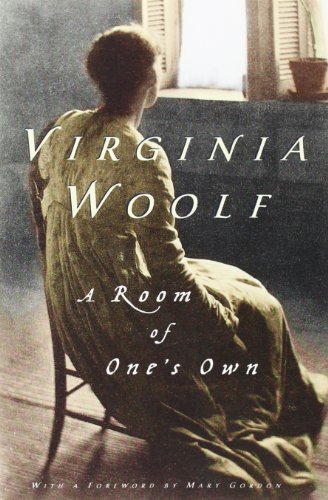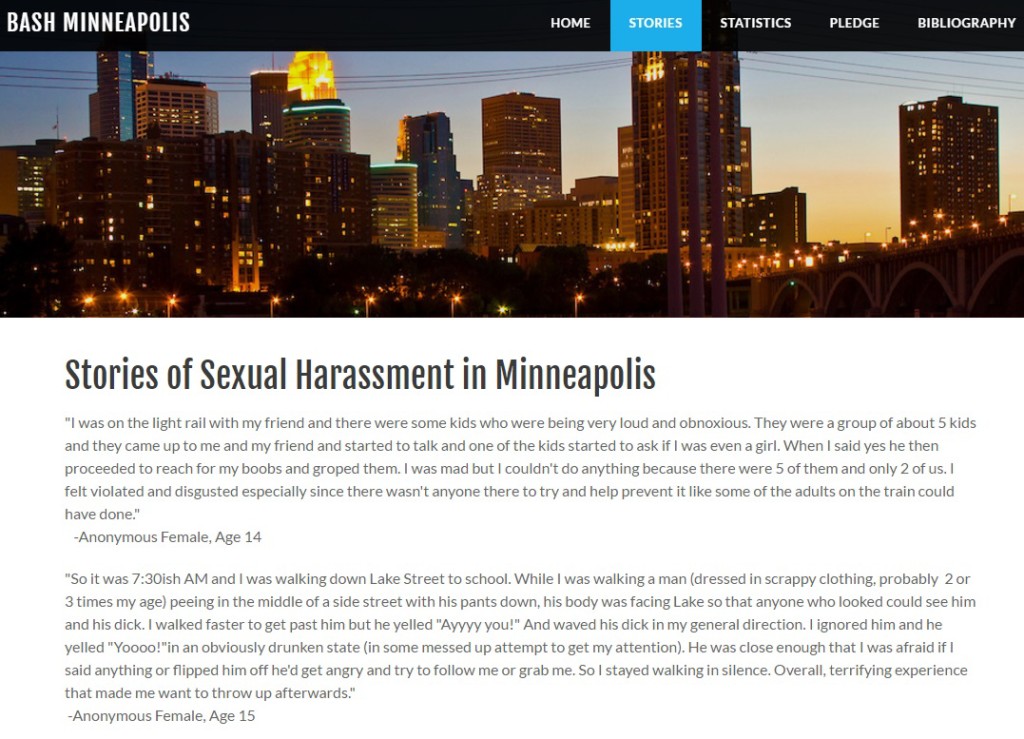Deborah D’Orazi, NY, USA, SSH Blog Correspondent
 The first time I remember reading about street harassment and recognizing it for what it was was in Virginia Woolf’s iconic essay, A Room of One’s Own, when I turned 17. In the essay, Woolf sets out on a momentous task to speak on women and literature and ends up writing about her journey searching for women in literature, women who write literature, and why women are not more prudently featured within the realm of literature since they are so often portrayed as the inspiration for what are deemed some of the greatest and most romantic written words in the English language. To her dismay, Woolf finds little evidence of women in literature (outside of the occasional female ruler or writer and the consistent muse or romantic interest—typically always written by men). She is then determined to journey and figure out why. Ultimately, she comes to a remarkably economic conclusion stating that “a woman must have money and a room of her own if she is to write fiction”. What is even more profound is that Woolf demonstrates that this economic necessity for a woman’s career and independence within the private sphere is not at all possible without uncompromised, safe access to the public sphere, or public spaces without harassment or the threat of it.
The first time I remember reading about street harassment and recognizing it for what it was was in Virginia Woolf’s iconic essay, A Room of One’s Own, when I turned 17. In the essay, Woolf sets out on a momentous task to speak on women and literature and ends up writing about her journey searching for women in literature, women who write literature, and why women are not more prudently featured within the realm of literature since they are so often portrayed as the inspiration for what are deemed some of the greatest and most romantic written words in the English language. To her dismay, Woolf finds little evidence of women in literature (outside of the occasional female ruler or writer and the consistent muse or romantic interest—typically always written by men). She is then determined to journey and figure out why. Ultimately, she comes to a remarkably economic conclusion stating that “a woman must have money and a room of her own if she is to write fiction”. What is even more profound is that Woolf demonstrates that this economic necessity for a woman’s career and independence within the private sphere is not at all possible without uncompromised, safe access to the public sphere, or public spaces without harassment or the threat of it.
This subject is explored early on in Woolf’s essay when she is beginning to contemplate and research her ideas. While Woolf encounters the beginning of an idea on a walk and starts to chase it she is promptly interrupted when “instantly a man’s figure rose to intercept me”. Woolf is instantly aware of the power dynamics. She is a woman visiting a man’s college, thus despite the space being open for her and others to walk in, she must remain on the gravel while male college members walk on the turf. She notes that this territorial power play did not actually physically harm her, but she did lose her thoughts and ideas that were so precious to her.
I am sure many would argue that this incident was not street harassment because it took place in a seemingly private space or that this incident was just a mere a sign of the times Virginia Woolf lived in. However, this indicates the importance of understanding the very definition of street harassment.
At Stop Street Harassment we use the following definition: “unwanted comments, gestures, and actions forced on a stranger in a public place without their consent and is directed at them because of their actual or perceived sex, gender, gender expression, or sexual orientation.”
Virginia Woolf, who undoubtedly came from a very privileged background and lived a very privileged life, was still looked down up, criticized, and harassed because she was a woman taking up space within the public realm, where typically men dominated and still dominate today. As Woolf notes in her essay, “The only charge I could bring against the Fellows and Scholars of whatever the college might happen to be was that in the protection of their turf” which sent her ideas into oblivion.
Yet, how many ideas, leisure and social activities, or mere existences of women, racial and ethnic groups, religious minorities, LGBTQIA individuals, differently abled people, etc. have been disrupted because the public sphere is, in fact, not so public. It is important to note this intersectionality because women inhabit all of them and as women and other disenfranchised groups gain rights and visibility within the public sphere, harassment remains a constant. This constant serves as a reminder that people must remain within a social constructed role, no matter how much it inhibits or oppresses them. And it is often quite effective in limiting and changing where people travel geographically, whom they socialize with, and where a person may go for services. For example, if a girl is harassed on her way to school, depending on her individual situation, she may have to change her route, endure the harassment, or stop going to school all together. All of these situations create a legacy of trauma and undue economic burdens that disenfranchise an individual, community, and population. It is not at all uncommon for women to consider changing their routine or way they lived to avoid street harassment. As documented by a Penn, Schoen and Berland Associates survey from 2000 it was discovered that 84 percent of women would “consider changing their behavior to avoid street harassment.” How much economic opportunity have women and other communities lost because of harassment? How much safety? Too much for my liking.
So, what should we do? Educate, advocate, organize, speak out, protest, create policy, listen, and support each other. Many people have experiences, some similar and some different, but recognizing the reasons for street harassment and the many forms it takes for different people and communities is important for an inclusive movement. It is a hard journey, but combating street harassment in its many forms as misogyny, racism, classism, homophobia, transphobia xenophobia, abelism, etc. is just as important as speaking out. So many have been harassed into silence, trauma, injury, hurt, and death in public spaces throughout countless years that it is important to note the many reasons why. Without this understanding and cooperation more people will be oppressed and more people will continue to be left out of public spaces and, consequently, public life.
Street harassment is a push back towards oppression and objectifying. Let us strive to make a world where people’s private and public lives can thrive and where people can have safe access to safe places and safe public and private lives. As Virginia Woolf wrote in another essay, “Thoughts on Peace in an Air Raid”, “mental fight means thinking against the current, not with it” and we must continue fighting against the current in order to achieve justice and equality for everyone to use public spaces freely.
Deborah is a recent MSW graduate who also received certification from American University’s Women and Politics Institute and Rutgers’ Center on Violence Against Women and Children. In addition to social work, Deborah is looking to pursue an MPP/MPA and she is also extremely passionate about the arts (theater, writing, film, television, fine art, poetry, performance art), history, and Hamilton.

